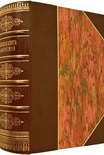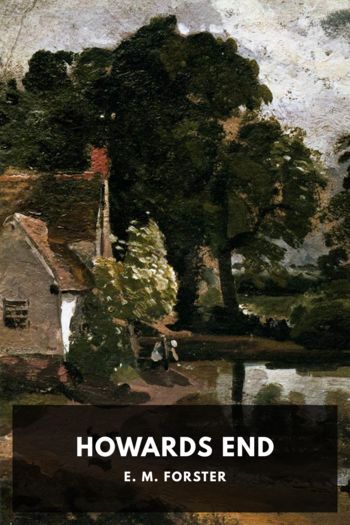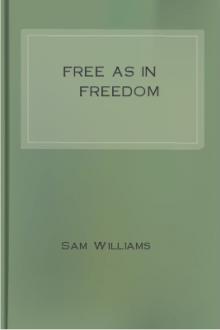How to Become a Witch Amber K. (reading books for 7 year olds TXT) 📖

- Author: Amber K.
Book online «How to Become a Witch Amber K. (reading books for 7 year olds TXT) 📖». Author Amber K.
Training for a First-Year Craft Dedicant
1. Achieving Balance
Energy management: Controlling your own energy; sensing others’ energy; balancing your chakras; daily exercises.
Thou art God/dess: Taking care of your body, mind, soul, and emotions; a mixture of self-care, nutrition, breathing exercises, etc. Also recognizing the divinity in others.
The Witches’ Pyramid and the pentagram; self-assessment in terms of air/fire/water/earth/spirit balance.
2. Ritual Format
Circlecasting, calling quarters, invoking Deity, and techniques for raising power and grounding.
Ritual design (identifying ritual themes and purposes, selecting deities to work with, choosing activities).
3. Meditation/Trance
Grounding and centering; solitary meditation.
4. The Deities of the Old Religion
The Goddess: Maiden, Mother, Crone, and other feminine faces of the Divine.
The God: the Hornéd God, Green Man, and other masculine faces of the Divine.
Goddess and God are One; the many-facets model.
5. History and Tradition
Terminology, symbols, myths, legends, and traditions of Witchcraft.
The history of ancient religions, evolution of the Craft, and modern Wicca.
6. Ethics
The Rede, the Law of Return, the Ordains, and informed consent.
7. Spellcasting
Defining your goals; tools, design, and Words of Power; amulets and talismans.
8. Psychic Skills
Exploring intuition, clairvoyance, psychometry, telepathy, etc.
9. Divination
Ethics, issues, and methods (tarot, astrology, runes, etc.).
10. Ritual Tools
The functions of the basic four, designing or choosing them, and hands-on fabrication.
11. Wicca in the Modern World
Overview of modern Paganism; Wicca’s relation to ecology, feminism, civil rights, peace, religious freedom, and interfaith efforts.
12. Wheel of the Year and Esbats
The eight sabbats, solar and lunar cycles, rites of passage.
This list of subjects is only a sample—each coven will teach in the order it feels is appropriate, and some material may be expanded or deleted. You may use this as a checklist at the end of your year and a day—have you covered all of these subjects, or are there some that require more in-depth exploration before you call yourself a Witch?
Many traditions of Witchcraft recognize one’s progress by conferring initiatory degrees on their students. These degrees can be structured in many ways. In the most traditional way, you begin by dedicating yourself to the study of the Craft for a year and a day and become known as a dedicant, candidate, seeker, or simply a first-year student.
After the year and a day, if you have finished all the classes and readings and have shown that you are ready, you may be initiated into the first degree, and you can call yourself a Witch. At this stage, you are considered a priest or priestess to yourself—you know the ethics of Witchcraft and some religious history, you are familiar with the Goddess and the Old Gods, you know basic spellcraft and ritual and are co-leading rituals, you understand the elements and basic correspondences, and you have a connection to nature, the greatest teacher of all.
There is one more requirement, and only the dedicant can know if he or she has achieved it—he or she must have undergone a spiritual initiation, had an up-close-and-personal experience of the Goddess or the God, and have formed a personal relationship with Divinity. The requirements listed here are derived from the Coven of Our Lady of the Woods but represent one way a person might be prepared to assume the title of priestess (or priest) and Witch.
Sample Requirements for First-Degree Initiation
As a minimum, candidates:
1. Must have experienced initiation on a spiritual level.
2. Must find the common beliefs, traditions, practices, and ethics of the Craft compatible with theirs.
3. Must have freely chosen Wicca as their spiritual path.
4. Must have been actively exploring the Craft for at least a year and a day.
5. Must have basic magickal skills and knowledge of Craft terms.
6. Must have read the required books and several of the recommended ones.
7. Must be willing to live by the Wiccan Rede; take an oath to honor and act in accord with the Goddess and God within, in daily life as well as in ritual; keep certain information confidential; and to aid and defend their sisters and brothers of the Craft.
8. Must devise a personal oath, declaring their present spiritual and magickal goals.
9. If in a coven, must be working to develop and maintain strong, wise, and caring relationships with each coven sister and brother, and communicate their needs, expectations, and resources to other coveners.
10. If in a coven, must actively participate in most coven activities and take a fair share of responsibility for planning, organization, and leadership.
11. If in a coven, must support the needs of the coven by exchange of energy through teaching or mentoring and by giving money, supplies, and/or time and energy to help with coven projects or fundraising.
12. Must create or obtain the basic garb and tools of the Craft and coven: a robe, athame, chalice, wand, and pentacle.
13. May choose a Craft name to mark a new stage of spiritual growth, and explain to the coven where and when it may be used.
After another year and a day of learning and practice, getting to know the Old Gods better, and doing shadow work, the Witch may be granted the second degree—sometimes considered a priest or priestess to others. At this stage, they can help newer students, lead rituals, teach some subjects, and assist with coven leadership—perhaps as maiden or summoner (who are often the high-priestess-in-training and the high-priest-in-training, respectively). The titles and duties will vary from one Witchcraft tradition to another.
The box below contains the most commonly used symbols in modern Craft traditions with three degrees. However, many who consider themselves Wiccan, or who are self-initiated, wear jewelry with the second-degree pentagram (point up) to show their spiritual inclination. It has effectively become the symbol of Wicca.
During the third year, Witches will work on the hieros gamos, or sacred marriage within—the balancing of male and female energies—so they become fully actualized people, free of limiting stereotypes. They continue to lead rituals and perform magick, and if planning to create a new coven, they learn about group dynamics, teaching techniques, and pastoral counseling.
When all this is completed and





Comments (0)